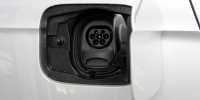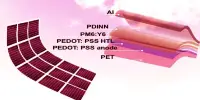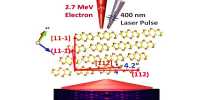Liquid crystal elastomers (LCEs) are often talked about as some sort of material of the future, with potential applications for everything from artificial muscles and medical equipment to space applications and sticky suits like Gecko.
However, researchers have often struggled to build these materials into three-dimensional structures – still. As published in the activities of the National Academy of Sciences, Scientists have used new insights to create three-dimensional LCEs that can reshape in any direction in response to multiple stimuli. In a particularly great demonstration of this achievement, they developed what they called “microscopic sunflowers” that could be placed on solar panels and follow sunlight for better energy capture.
The microstructure consists of tiny columns made of light-reactive liquid crystal elastomer. However, they also found similar structures that are deformed in response to heat and moisture, each controlled by their own chemical and material properties. Seriously, microstructures also respond to magnetic fields. With this insight, they were able to distort the LCE shapes and manipulate their liquid crystal structure to the desired shapes.
First author Yuxing Yao, a graduate student at the Wyss Institute for Biologically Inspired Engineering at Harvard, said in a statement, “The concern for this project is that we have been able to control the molecular structure by aligning liquid crystals voluntarily in 3D space, allowing us to program almost any shape in the geometry of the material.”
Microstructures, however, return to their original shape when exposed to an ambient temperature. You will see this as a negative aspect of the discovery but researchers have argued that it is just another advantage. For example, it can be used to create encrypted messages that are expressed only in certain conditions or stimulus elements whose stickiness can be turned on and off. This is just the beginning of the possibility of liquid crystals another study, published this week, and used LCE to create an element with an interesting and useful property: it is auxetic. This means that if you stretch it, it is not thinner, it is thicker.
Lead author Dr. Devesh Mistry, from the University of Leeds in the UK, said in a statement, “Auxetics is also great for absorbing energy and preventing fractures.”These features can have a lot of potential applications, including body armor, architecture, and medical equipment. We have already submitted a patent and are in talks with the industry about the next step. “














